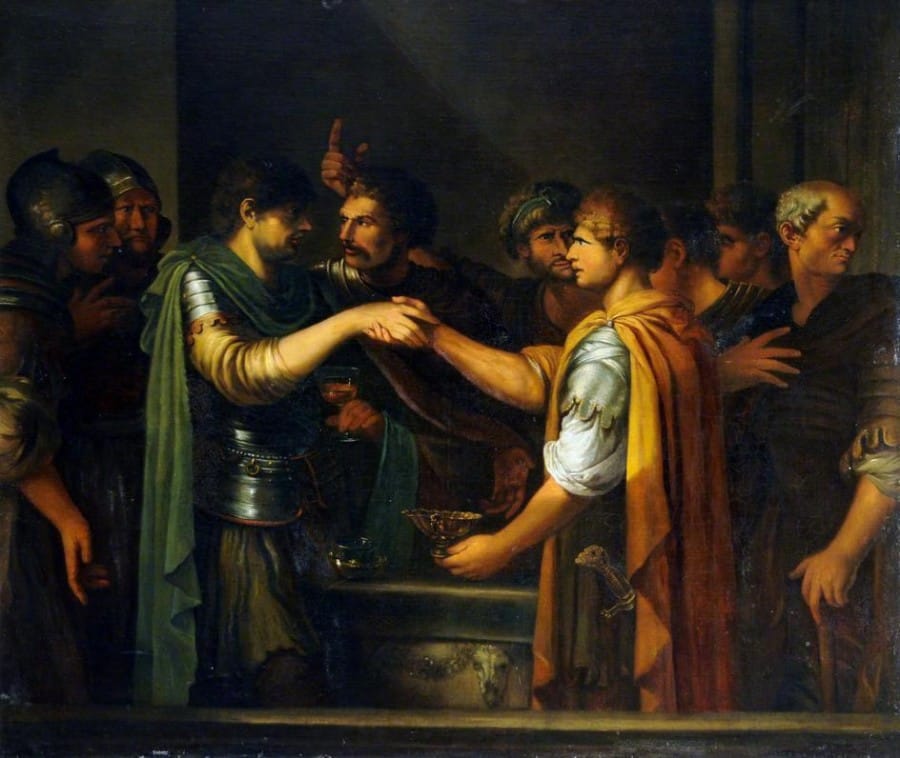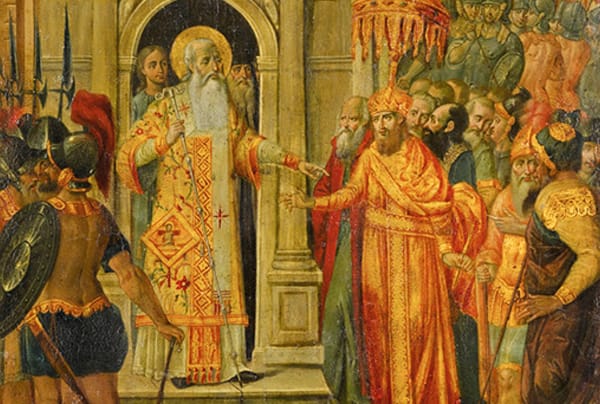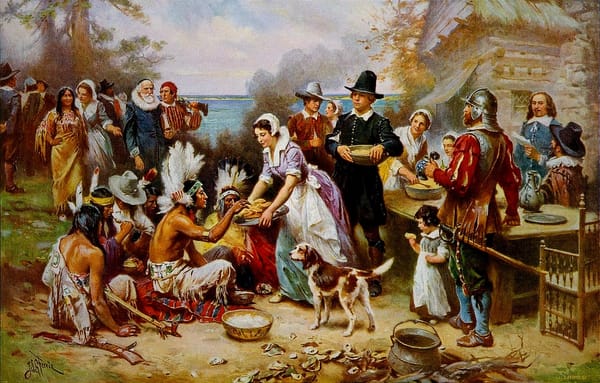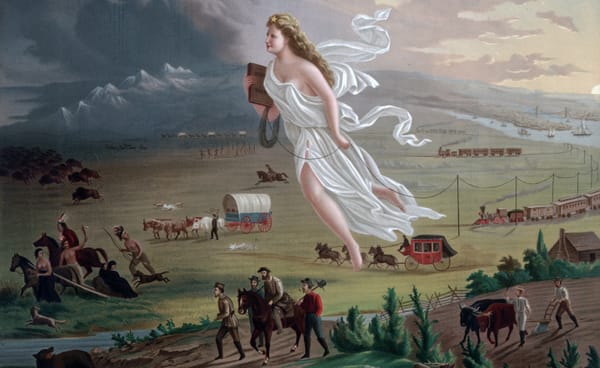An Open Letter to Christian Nationalism from a Former White Nationalist, Part 2 of 5: Character and Solidarity
My intention is to provide a compass based on my own decade of experience, as well as study and reflection on Western history.

Character and Solidarity
In the first part of this series, I introduced my mission in writing this letter and gave the necessary background on the history of the Alt-Right and White Nationalism (AR/WN) and an assessment of its successes and failures. My intention, again, is to provide a compass for Christian Nationalism and the New Christian Right (CN/NCR) based on my own decade of experience, as well as study and reflection on Western history. To this end, I will now turn to the first two out of six key issues regarding which I want to exhort attention and application of the lessons learned by WNs such as myself over the past decade. While some issues to follow will be primarily of ideological value, these first two relate most immediately to pragmatic political strategy.
Personal Character
Personal moral character is a realm in which Christian nationalism should possess an advantage over any secular or otherwise non-Christian nationalism. This is not intended to be a slight to non-Christians, but a challenge to us; not a justification for boasting, but a call for ruthless self-searching. It is a way in which we will bear witness to our faith through our character, and fundamentally, is something that is required of us by God.
The culmination of WN occurred with the short-lived project of the National Justice Party in 2020–2023. While there were many serious, and ultimately terminal issues with this effort, some positives need to be stated. It was the most serious and well-organized effort at a nationwide, radical political organization in the AR’s history, and probably much farther back. In public at least, it held to a consistent and uncompromised set of pro-White, American nationalist, and anti-Semitic principles. It conducted invaluable public activism on issues such as the Waukesha parade attack and the East Palestine toxic spill, bringing not just awareness and grassroots support to White individuals and communities intentionally abandoned by the US government and justice system, but in a couple cases even directly prompting government aid. Its internal organization was an unprecedented innovation in decades of radical pro-White organizing, and as a result, for a brief period it appeared to hold the potential to provide an unprecedented level of unity to a notoriously divided political scene.
The collapse of the NJP was precipitated most directly by a sex scandal involving a married member of the leadership. This was merely one of the latest in a long line of sexual sins which have haunted the AR since its earliest days, and while we acknowledge that such things are destructive to the soul regardless of whether they ever come to the light of public scrutiny or not, what is particularly instructive is the consistency with which they created massive and regularly fatal problems for individuals, brands, and organizations, and contributed in no small way to the terminal disunity, lack of direction, and permanent juvenility of what was meant to be a revolutionary movement.
Attention to one’s personal character is necessary not just in order to be able to inspire confidence, but also to be able to present as a Christian without bringing disrepute on the name of Christ. Nick Fuentes and his “America First” movement have avowed a Catholic traditionalist aesthetic for years, which has done nothing to prevent voluntarily and eagerly associating with Jews, cross-dressers, homosexuals, anti-Whites, sex traffickers and pornographers, and people of the lowest moral character who gleefully talk about and depict raping the women and children (you read that correctly) of their internet enemies. Fuentes defended followers of his who, after the Waukesha parade attack, mocked underage White girls in the hospital by saying they would probably grow up to have sex with black men. These consistently questionable choices have also had real life effects, such as the grooming of a 15-year-old male Fuentes fan by Fuentes ally and brown homosexual Ali Alexander, to which Fuentes responded by blaming the then-underage boy as responsible for his own choices, and probably himself attracted to Alexander. Fuentes’ political associations, and transparent lack of nearly any political or moral principle, have contributed significantly to the disrepute of those few positions on which he has displayed some consistency, such as anti-Semitism and support for Palestine. He can only blame himself for the association many White people now draw between a consistent anti-Semitic position and the embrace of openly anti-White “allies,” a mistake we cannot afford to repeat.
At the same time, we should soberly recall that the history of the visible church is replete with the very same types of scandals, in whatever branch or denomination. “Therefore let anyone who thinks that he stands take heed lest he fall” (1 Corinthians 10:12)—this must become everyone’s personal watchword, with full conviction that even if no one else, God sees. The fruits of our striving for righteousness will be seen not in our pride, but our humble loyalty and piety, our cautious generosity, our farsighted wisdom, our refusal to compromise truth and principles, and ultimately our devotion to struggle until victory.
No Enemies on the Right
In my observation, the current practice of “no enemies on the right” (or “to the right,” as some prefer – I will use NEOTR) on the NCR is commendably superior to any similar effort in the history of WN. At core, NEOTR is a recognition of the reality of collectivism: the house divided against itself necessarily falls to the one that isn’t. Wisely, many CNs seem to have learned that by its very definition, NEOTR does not imply or require complete agreement. If someone is “on the right,” they recognize two things: that they prefer the right to the left; and that disagreements with others on the right are not to be resolved by playing to the center, thereby breaking solidarity and inherently undermining all parties involved by submitting the right to the judgment of holders of opposing principles. Rather, disagreements are to be worked through as necessary by leading through example, and putting ideas and strategies to the test through the freedom of internal discussion and the honesty of external struggle against common foes.
This is, intrinsically, a revolutionary principle, one that separates a movement capable of coalescing and oriented toward success from one which eschews both of those things from its outset. And it is crucial to solving the prisoner’s dilemma that killed WN.
We have discussed how WN was subject to an unrelenting campaign of state-sanctioned and in some cases state-directed persecution. If the reader will permit me the example, the early church was also subject to a far more intense persecution, but unlike WN, emerged triumphant. Persecution alone is not necessarily the death knell of a movement. However, unlike for the church, in the case of WN, the fatal blow was that at the same time as its adherents and pioneers were persecuted individually, the victorious ideological basis of WN was also successfully stolen from them.
This was accomplished in multiple ways, but generally through one of the following: the incorporation by the liberal system of individual WNs willing to take, generally, far less than thirty pieces of silver to make their peace with the regime; and the selective adoption by mainstream figures or organizations of WN talking points or positions, decontextualized from a larger radical framework. Concerning the latter, the system could no longer ignore the gradual but seemingly inexorable formation of a White racial consciousness, so it offered individual concessions, which wherever possible involved the disguising of Jewish interests as White ones. These included the removal of freaks and non-Whites from military commercials; tactical allowance for racism towards Muslims or Chinese, in preparation for war with potential competitors of Israel or of Israeli power wielded through the United States; or well-publicized, individual deportations of foreigners who failed the barely-disguised loyalty test to Israel. Whenever possible, White identity was channeled into bravado and chauvinism in rhetoric, which was not matched with any effective change of direction from the realities of White demographic replacement, Jewish power, and the taboo on White racial political sovereignty (that is, exclusive of Jews).
It is also important to note that the first strategy gave the Jewish regime an additional benefit: the ability to introduce subversive ideas into the radical sphere through the mouths of people who were ostensibly still part of it. As mentioned in Part 1 of this series, the AR never successfully developed an immune response to this, and rather than obviously compromised influencers or organizations losing their credibility with the broader, purportedly radical pro-White audience, they instead formed their own cliques within it, in effect giving the Jews the ability to create a nearly infinite number of permutations of WN positions with differences just large enough to enable them to infight rather than work together. At the same time, the Jews also figured out how to introduce genuinely contradictory ideas, such as, incredibly, support for the state of Israel, into WN, again without triggering a sufficiently effective immune response.
With this dual pull of forces—on the one end, the choice between persecution and the temptation for comparative material comfort and often truly pitiful levels of popularity if one would just compromise a bit; and on the other, people like Charlie Kirk suddenly parroting a couple previously radical positions, enabling ordinary people to sate the curiosity that WN had created with easily accessible, popular sources that would not incur the same social costs for the audience—WN was finished. It could not survive, and while some holdouts remain reasonably successful on an individual basis, there is no credible path visible at this point for a collective and organized resurgence under any of their banners.
NEOTR is the answer to this. Maintaining solidarity between CNs of differing political and theological positions, as well as differing levels of popularity and public acceptability, is the only way to prevent this strategy of divide and conquer, which otherwise will inevitably succeed, and either scuttle CN politically or neuter it as a vector of genuine change. We need to learn from the left that a serious movement protects its radicals and refuses to throw them to the wolves. As described in Part 1, the radicals are the ones who trailblaze, who push the boundaries of discourse, who introduce and test new ideas and strategies, and ultimately, who present themselves as necessary martyrs by telling the truth in those situations where it is truly currently unacceptable. Protecting one’s radicals also ensures that individual ideas, positions, and talking points remain within a cohesive and radical framework, preventing the regime from taking a radical movement apart using compromise, bribery, and subversive agents. Finally, radicals will always be the primary source of the most passionate public support.
We must remember that as long as the liberal regime is in power, it will have its hand on the scales against us. However, conversely, if we maintain true unity, we will just as inevitably eventually prevail.
In the following parts, I will shift to a more ideological focus to discuss issues that define necessary political and social change.
Profiting from the content? Donate to the Cause.
Helps us reach our monthly goal.






